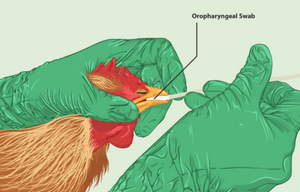![]()

The Nebraska Department of Agriculture and the USDA’s Animal and Plant Health Inspection Service have confirmed 2 more cases in the state of HPAI – highly pathogenic avian influenza or bird flu – including one in the Northern Panhandle.
State Veterinarian Dr Roger Dudley says bird flu was confirmed in a commercial flock in York County a short time before being confirmed in a backyard flock in Box Butte County. Both flocks will be humanely depopulated and disposed of properly.
There have now been 11 cases of bird flu in Nebraska this year, with 3 in the Panhandle – a small mixed backyard flock in Scotts Bluff County in the spring and one 2 weeks ago in backyard chickens in Dawes County.
Dr Dudley says the state ag department followed USDA policy and established a 6.2-mile surveillance zone around each infected flock.
He encourages all poultry producers in surveillance zones to make sure they know the signs and symptoms of bird flu and immediately notify the state of any sick or dying birds.
Those symptoms include: a decrease in water consumption; lack of energy and appetite; decreased egg production or soft-shelled, misshapen eggs, nasal discharge, coughing, sneezing; incoordination; and diarrhea.
The disease can also cause sudden death in birds even if they aren’t showing any other symptoms, and the virus can survive for weeks in contaminated environments.
Avian influenza is a highly contagious virus that spreads easily among birds through nasal and eye secretions, as well as manure.
It can move flock to flock in various ways including by wild birds, who can carry the virus without becoming sick, and by contact with infected poultry or equipment, clothing, and shoes of caretakers who’ve been in contact with infected birds.
